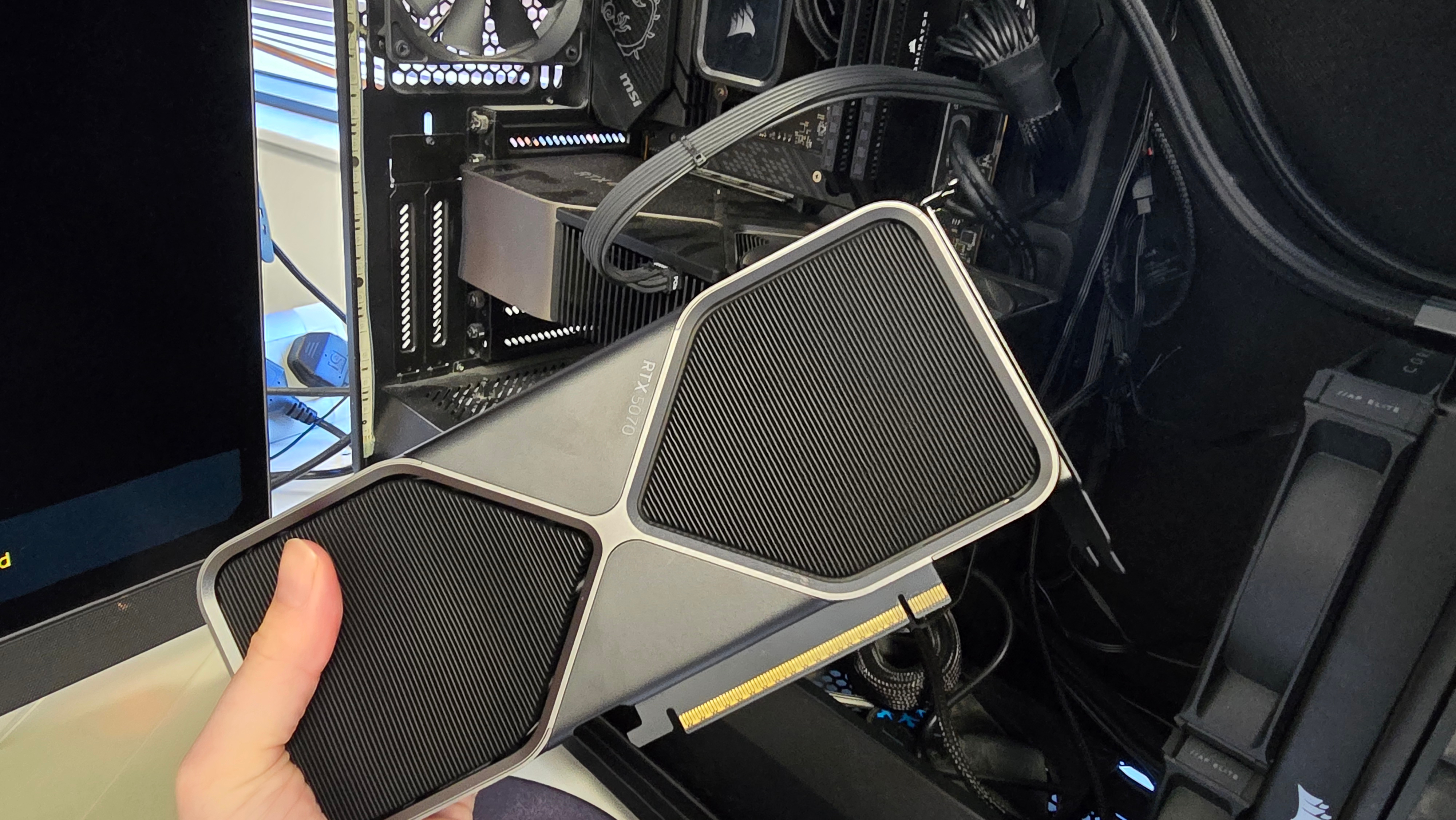Searching for one specific photo in an endless gallery on a smartphone can often be time-consuming. Editing multiple videos one by one may feel tedious and repetitive as well. The Galaxy S25 series uses vision AI technology and the understanding of natural language to address these issues and provide a more intuitive mobile experience for users in their daily lives.
When searching for a photo in their gallery, users can enter keywords that describe the situation — such as the date or locality, any objects present, any actions taking place and so forth — and Galaxy AI will analyze them to find matching photos. In addition, the flagship series boasts Auto Trim, a new video editing feature that can automatically select key segments from multiple videos and edit them into a separate video. These features are the result of advanced research in visual technology and close collaboration.

Samsung Newsroom met with developers from the Visual Technology Team of Samsung Research and the Visual Solution Team of the Mobile eXperience (MX) Business at Samsung Electronics to learn how the company developed even smarter photo and video experiences for Galaxy users. ▲ (From left) Wonwoo Lee, Inho Choi, Hongpyo Lee and Seonghwan Kim Labeling Every Element in a Photo With AI-Powered Classification Smartphones store a massive number of photos, with the average user having several thousand — or even tens of thousands — on their devices. As the number grows, it becomes increasingly difficult to find a specific photo right away.
On the Galaxy S25 series, the Gallery app automatically tags and categorizes various elements in photos such as objects, people and localities, allowing users to quickly and accurately find the desired images. This is incredibly convenient for users who want to relive past memories or retrieve important information fast. Keeping in mind that an effective search depends on classification, the developers tripled the number of tag types compared to that of the previous Galaxy series, fine-tuning photo subject recognition and labeling capabilities in the Galaxy S25 series.
In addition, they expanded the scope of clustering, a technique that groups data for people recognition. “By developing an image analysis engine and using zero-shot technology, we improved the performance so that the Galaxy S25 series can recognize object data it encounters for the first time,” said Hongpyo Lee from the Visual Technology Team at Samsung Research. “For people, we expanded analysis beyond facial features to include clothing, time and location, making it easier to group photos of the same person.
” ▲ Gallery Search Finding Photos With Conversational, Natural Language Through Gallery Search Samsung also focused on enhancing natural language search performance in the Gallery. The company developed a search model that reflects frequently used phrases and various application cases, allowing users to find the photos they want using natural, conversational sentences instead of word-based searches. “We leveraged a vision-language model that learns by associating images with text and used generative AI to automatically generate a wide range of sentences that users might enter,” Lee shared.
“We also optimized and compressed the search model so it runs quickly on-device.” “Building on our previous research, we successfully applied natural language processing capabilities to our products, including a context-aware image analysis engine and a large language model (LLM),” said Inho Choi from the Visual Solution Team of Samsung Electronics’ MX Business. The developers also worked to deliver unbiased and more accurate search results.
“We wanted to anticipate various usage scenarios and identify potential issues in advance so that malicious search queries wouldn’t lead to inaccurate results,” Choi explained. “Building a database of negative words, profanity and neologisms, and then conducting user tests to improve search accuracy was both the most challenging and rewarding part of the process.” ▲ Inho Choi from the MX Business and Hongpyo Lee from Samsung Research Editing Multiple Videos at Once With Auto Trim Video editing is also becoming an increasingly important part of the gallery experience.
While video is a popular form of media consumption, having video editing tools readily available and using them with ease is often not as simple as it seems. To address this, the Galaxy S25 series introduces a feature that makes editing much faster and more convenient through enhanced AI-powered video analytics. The Auto Trim feature extracts key scenes from multiple videos of the user’s choice to create a new short-form video.
It was important for Auto Trim to be able to quickly analyze videos up to 90 minutes long, generate an edited video and adjust the length of that new video. The developers achieved this through close collaboration, seamlessly integrating Samsung Research’s advanced technological expertise with the MX Business’ mobile optimization capabilities. “Existing video analytics technologies have limitations, such as large model sizes, slow processing speeds and the uniform selection of key video segments,” said Seonghwan Kim from the MX Business’ Visual Solution Team.
“We optimized the Galaxy S25 series’ video processing performance by testing and verifying multiple candidate solutions to deliver a fast and easy editing experience based on on-device AI.” “We’ve introduced a feature that enables users to effortlessly identify key moments in videos, demanding significantly more data processing than photos, and tailor the duration of these edited segments to their preferences” explained Wonwoo Lee from Samsung Research’s Visual Technology Team. “Getting Galaxy AI to identify highlights in videos with a level of sensitivity comparable to that of humans was a challenge, but by establishing the standards together, Samsung Research and the MX Business were able to significantly improve overall functionality.
” ▲ Auto Trim From Analyzing to Generating: Vision AI and Its Endless Possibilities Samsung Electronics is researching a wide range of vision AI technologies, ranging from filming and editing technologies for smartphones to multimodal interaction technologies used in augmented reality (AR) and virtual reality (VR). The core of this research is the ability to quickly and accurately analyze subjects such as people and animals, as well as their surroundings, in videos on-device, and to recognize the meaningful moments in those videos. Through vision AI technology, Samsung aims not only to evolve typical smartphone features like shooting and viewing photos and videos, but also pioneer novel ways to consume content.
“We’re actively utilizing AI technology for fast, easy and high-quality editing in the video domain,” said Kim. “Samsung will focus on further developing the technology so that AI can better understand the context of video content, helping users reduce editing time effectively and generate edited videos that reflect the user’s intent — all without requiring professional editing skills.” “By continuously advancing video analytics technology, we aim to develop even more innovative features that leverage the power to understand video content — such as video search, intelligent video editing effects and beyond,”said Wonwoo Lee.
“Samsung will strive to develop cutting-edge vision AI technology that can be applied across a broad range of use cases.” ▲ Seonghwan Kim from the MX Business and Wonwoo Lee from Samsung Research Gallery Search and Auto Trim are prime examples of how Galaxy AI enhances everyday life. As developers continue to advance the company’s image and video analytics technology, Samsung Electronics will deliver an expanding range of new experiences that make it easier and more intuitive for users to find and capture life’s key moments.
.
Technology

[Interview] A New and Enhanced Gallery Experience: How Samsung Transformed Photo Searching and Video Editing With the Galaxy S25 Series

Searching for one specific photo in an endless gallery on a smartphone can often be time-consuming. Editing multiple videos one by one may feel tedious and















